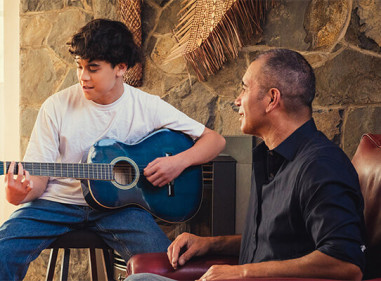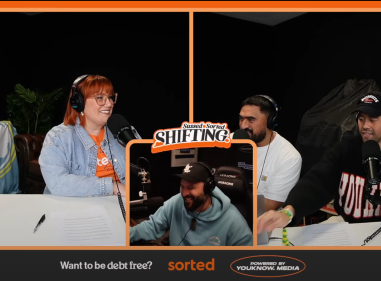
Planning & budgeting
Saving & investing
KiwiSaver
Tackling debt
Protecting wealth
Retirement
Home buying
Life events
Setting goals
Money tracking
Plan your spending with a budget
Getting advice
Studying
Get better with money
What pūtea beliefs do you have?
How to build up your emergency savings to cover unexpected costs
How to save your money
How to start investing
Find a financial adviser to help you invest
Your investment profile
Compound interest
Net worth
Types of investments
Term deposits
Bonds
Investment funds
Shares
Property investment
How KiwiSaver works and why it's worth joining
How to pick the right KiwiSaver fund
Make the most of KiwiSaver and grow your balance
How KiwiSaver can help you get into your first home
Applying for a KiwiSaver hardship withdrawal
How to use buy now pay later
What you really need to know before you use credit
How to get out of debt quickly
Credit reports
Know your rights
Pros and cons of debt consolidation
Credit cards
Car loans
Personal loans
Hire purchase
Student loans
Getting a fine
What happens if I start to struggle with moni?
How to protect yourself from fraud and being scammed
About insurance
Insurance types
Insuring ourselves
Wills
Enduring powers of attorney
Family trusts
Insuring our homes
Losing a partner
Redundancy
Serious diagnosis
How to cope with the aftermath of fraud
Separation
About NZ Super – how much is it?
When you’re thinking of living in a retirement village
How to plan, save and invest for retirement
Manage your money in retirement
Find housing options in retirement
Four approaches to spending in retirement
Planning & budgeting
Saving & investing
How to build up your emergency savings to cover unexpected costs
How to save your money
How to start investing
Find a financial adviser to help you invest
Your investment profile
Compound interest
Net worth
Types of investments
Term deposits
Bonds
Investment funds
Shares
Property investment
View all
KiwiSaver
Tackling debt
How to use buy now pay later
What you really need to know before you use credit
How to get out of debt quickly
Credit reports
Know your rights
Pros and cons of debt consolidation
Credit cards
Car loans
Personal loans
Hire purchase
Student loans
Getting a fine
What happens if I start to struggle with moni?
View all
Protecting wealth
Retirement
Home buying
Reading time: 4 minutes

Tracking exactly where your money is spent will help you and your whānau make a plan and get ahead. Seeing it clearly gives you the power to make changes and get your money flowing towards your goals.
It’s practically impossible to remember what you spend money on every day. Tracking spending is important as it shows you where your money is really going. You’ll be able to spot spending leaks and places where you might not want your money to flow. You can then use this information to help you create and review your spending plan (a.k.a. your budget).
What are you and your whānau trying to achieve by tracking spending? What goal do you have in mind? Are you trying to save for a house deposit, pay off debt quicker or save for a holiday? Write down your personal and whānau goals. You can use our goal planner to help.
Start by tracking a month of spending. It’s important to note down every single purchase you make in your household. This is the best way to get an accurate picture of spending habits. Even better is to track three months of spending, as you’ll get a really good idea of where your money is going. There’s more below on ways to track your spending.
Money tracking needs to be as accurate as possible so it reflects what is really happening.
The tracking will give you a pretty good idea of your spending habits, so now it’s time to plan your spending so you’re in control of where your money goes. Here’s our guide.
It’s not as scary as you think – the aim of a spending plan is to help you and your whānau stay on track with your goals.
Did you identify any areas where you could cut back on spending? Have a go at setting some figures for each category of expenses.
Here are a few options for tracking your spending.
If you’re signed up with a New Zealand bank, they will be keeping a record of most of your transactions and data, and they probably include money tracking in their apps. You may find these helpful in categorising your purchases and capturing everything you spend. But remember that you may also be spending from other accounts or cards, or even cash, which you’ll need to record as well.
You might like to try an app that’s designed to help you track your spending on the go.
Some apps can even link directly with your online banking and automatically pull in all your spending!
Here are some examples:
If you are a fan of Excel this could be your go-to tracking tool. Excel or Google Sheets can automatically calculate expenses in certain categories.
For those who like to be a bit more traditional, writing all your expenses down in a notebook may be the best option for you. Take the notebook everywhere you go.
Or try our printable spending diary template – My budget planner.

Little things like smoothies and takeaways add up, so make sure you include them!
It’s important to continue tracking your money even after you have created your spending plan (budget). Check your actual costs against your plan. How did you do? Does your plan need some tweaks?
It’s not realistic to stick to the same spending plan for months on end. Things change and you will need to shuffle your money around. Put a reminder in your diary to review your plan after three months and see if you can make any changes. Check to see how you are going with your goals – can you find any other money to funnel towards them, perhaps a side hustle?
Why not give our budget planner a go?

A budget (or money plan) is really just a simple plan for your spending.
Guide
Here’s the first step to sorting our finances: working out where we want to be moneywise and what our priorities…
Read more

Guide
A budget (or money plan) is really just a simple plan for your spending.
Read more

Guide
Studying can be an investment in our future. Interest-free student loans seem like easy money, but borrowing too much could…
Read more

Guide
It’s important to take a little bit of time to think about our relationship with money and what we believe…
Read more

Guide
Managing money can be challenging – not all of us have the skills to sort out the more complicated stuff.…
Read more

Guide
Being onto it with money helps you establish control over where you want to head in life, providing you with…
Read more

Video
Get your saving sorted by tuning in to this free one-hour webinar hosted by financial adviser Unicia Veer.
Watch video

Video
With Christmas and the holiday season, we’re heading into an expensive time of the year with gift giving, summer holidays…
Watch video

Video
Encouraging parents to begin talking to their children about money early to build positive financial habits. By integrating money conversations…
Watch video

Video
Join us as we explore how couples can work together to grow their financial future. This episode offers valuable insights…
Watch video

Use verification code from your authenticator app. How to use authenticator apps.
Code is invalid. Please try again
Don't have an account? Sign up
Or log in with our social media platforms


A free account gives you your very own space where you can save your tools and track your progress as you get ahead.
Or sign up using Google:


